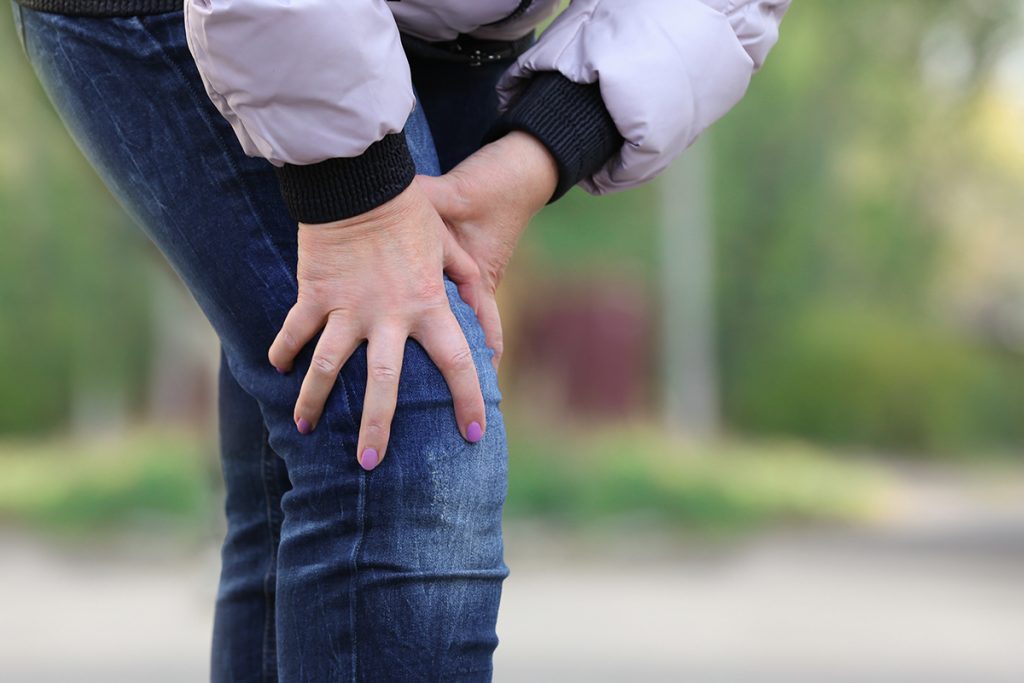Table of Contents

It’s been a cold, damp and dreary winter in Northern Virginia. If you’re feeling extra achy, you’re not alone. The connection between cold weather and joint pain is something many of us can feel in our bones. The evidence of a scientific relationship between cold weather and joint pain is mixed. Several studies suggest a solid link while others downplay it. But whatever the research says, for many of our patients, winter joint pain is very real. We believe every individual’s experience is valid, and our goal is to reduce pain in all kinds of weather. We want our clients to be active, mobile and energetic all year long.
Why Does Cold Weather Affect My Joints?
For experts at the Arthritis Foundation, cold-weather joint pain is not an old wives’ tale, and weather sensitivity is real. The University of Chicago Medical Center also concludes that weather tends to affect people with arthritis and chronic pain more than others.
Many studies point to barometric pressure rather than temperature alone as the leading cause of weather-related joint pain. Barometric pressure is the “weight” of the Earth’s atmosphere. It changes locally because of pressure systems that affect temperature and precipitation. The Arthritis Foundation suggests that these changes, like a cold or warm front moving in, can have the most impact on the joints. So it’s not just the cold but rather shifts in air pressure that cause problems. A 2015 study in the Journal of Rheumatology showed links between temperature, humidity and joint pain, with participants feeling the worst on damp cold days. Sounds familiar, doesn’t it?
But why do these changes mean increased pain? Some experts suggest that drops in barometric pressure cause tendons, muscles,and surrounding tissues to expand, putting pressure on joints. Others believe lower temperatures may increase the thickness of the synovial fluid that cushions the joints, slowing it down and preventing it from doing its job.
Lifestyle and mental health factors can also come into play. Activity often decreases in winter, meaning less movement and more stiffness in the joints. Finally, the winter blues can play a role: feeling sad or depressed may make joint pain worse.
How Can I Fight Winter Joint Pain?
The University of Chicago offers several excellent tips for fighting winter joint pain:
- Build muscle and bone strength through exercise.
- Maintain a healthy weight to reduce pressure on the joints.
- Dress in layers to stay warm indoors and out.
- Prioritize good sleep and a healthy diet.
- Stay active inside and stretch before going outside to loosen stiff joints.
Additional recommendations include:
- Talk with your primary care doctor or orthopaedist about Vitamin D supplements for bone and joint health.
- Stay positive and find enriching activities and connections in winter. If you’re feeling depressed, talk with your doctor about connecting with a counselor.
- Try heat therapy, including heating pads, warm baths, and whirlpools.
- Physical therapy, including exercise, ultrasound, and manual manipulation, can help combat joint pain–in winter and all year long.
Fighting Joint Pain at Countryside Orthopaedics
At Countryside Orthopaedics and Physical Therapy, our mission is to help patients of all ages feel comfortable and stay active all year long. If weather-related joint pain is slowing you down or holding you back, a professional physical therapy program can be a lifesaver. Our skilled therapists can help get you moving again while using techniques like manual therapy and ultrasound to relieve pain without medication. If cold weather means pain, let’s talk about how we can move past it and hit the ground running this spring.